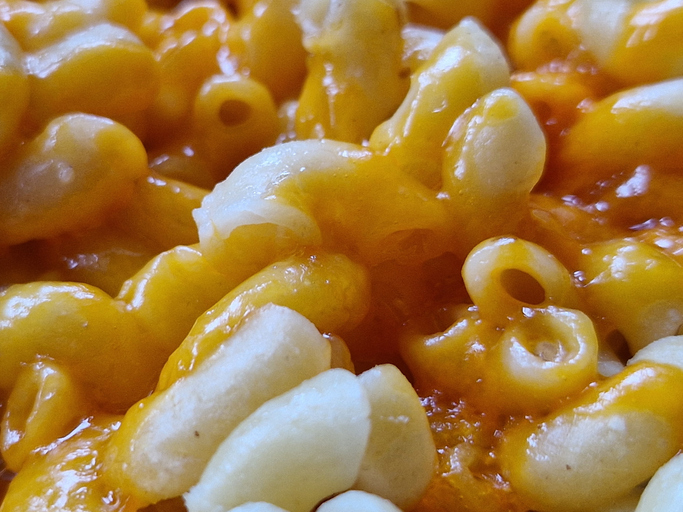Black Chefs Are Redefining Thanksgiving With Culinary Innovation
How 3 Chefs Are Redefining Thanksgiving And Celebrating Black Traditions Through Culinary Innovation
Share the post
Share this link via
Or copy link
As we prepare for Thanksgiving, it’s important to take a moment to reflect on the invaluable contributions of Black chefs, who have long been instrumental in shaping the culinary world. Despite their undeniable influence, their contributions often go underappreciated. From the rich, soulful flavors of Southern cuisine to the vibrant influences of African, Caribbean, and other diasporic food traditions, Black chefs are essential in preserving and evolving the diverse food cultures of both America and the world. Their impact, however, extends far beyond the kitchen—they are cultural ambassadors, innovators, and fierce advocates for equity in the food industry.
Thanksgiving is a time when many Black chefs inject their creativity into traditional meals, ensuring that time-honored recipes from African American and African diasporic cuisine remain at the forefront. From soul food staples like fried chicken, collard greens, and cornbread to dishes influenced by Caribbean and West African roots, Black chefs serve as the guardians of recipes passed down through generations. These dishes carry a deep, meaningful connection to resilience, community, and cultural heritage, serving as reminders of the strength and enduring spirit of Black communities. Through their cooking, Black chefs not only preserve these traditions but also continue to innovate and inspire new generations.
Many of these culinary traditions have their roots in the legacy of slavery. As noted by Afro, in Damon Lee Fowler’s book Dining at Monticello: In Good Taste and Abundance, the writer detailed how enslaved Black people were often tasked with following written recipes, but they were also skilled culinary artists in their own right. Just as with soul food today, they infused their own creativity and personal touch, transforming simple recipes into something far beyond the written word.
Love MadameNoire? Get more! Join the MadameNoire Newsletter
We care about your data. See our privacy policy.
“Their hands had known other products, their noses, other fragrances, and this was bound to affect the cookery for the better,” according to Fowler.
James Hemings revolutionized macaroni and cheese, a Thanksgiving staple.

Source: mcKensa / Getty
Black chef James Hemings was a prime example of black excellence in the cooking world at the time. Hemings’ life took a significant turn in 1774 when his owner, Thomas Jefferson, brought him to Paris to train as a chef in the renowned French culinary tradition, according to Monticello. While in Paris, Hemings studied under the guidance of Monsieur Combeaux, a prominent caterer and restaurateur, and later apprenticed with pastry chefs before working in the household of the Prince de Condé. During this time, he mastered the art of classic French dishes like bouillabaisse, coq au vin, and crème brûlée.
It was during this period that Hemings created his now-famous version of macaroni and cheese—a layered delicacy that has become a beloved staple in Black households, particularly during Thanksgiving celebrations. According to Afro, Jefferson was so impressed with Hemings’ macaroni and cheese that he couldn’t get enough of it. In fact, he had a macaroni extruder shipped to Virginia to bring the dish to America. Jefferson began hosting dinner parties where the macaroni and cheese was a standout, earning “rave reviews” from guests, the outlet noted. In 1779, after Jefferson was elected as wartime governor of Virginia, Hemings and his brother, Robert, became his personal attendants, solidifying their roles in Jefferson’s household.
Today, here’s how three Black chefs continue to honor and carry forward their family legacies through the art of cooking.
1. Rashida Holmes // Macaroni Pie

Source: James Stefiuk / Getty
Rashida Holmes, owner of Bridgetown Roti in East Hollywood, is putting her own spin on traditional Thanksgiving dishes, including a nod to the classic macaroni and cheese. Holmes is known for her signature Macaroni Cheese Pie, which features a unique twist—infused with a zing of curry and topped with a crispy, golden-baked crust, as she recently shared in an interview with the LA Times. For added richness, Holmes pours her father’s homemade gravy over the dish and uses fusilli pasta instead of the usual elbow macaroni.
Holmes explains that one key difference between her macaroni pie and the Southern-style version is the inclusion of eggs in the recipe. She also swaps regular milk for evaporated milk, a common substitute in Barbados where fresh cow’s milk isn’t always readily available. Holmes believes this substitution gives her dish a slightly richer, more indulgent finish, adding depth to the classic comfort food.
“The thing that’s great about this noodle is that you can get all your cheesiness into its crevices, where a macaroni noodle is sort of one-note, smooth on the outside,” Holmes shared of her beloved recipe during her LA Times interview. “Now some people would say that the sauce would go inside, but we’re not making a saucy mac and cheese, we’re making mac and cheese pie.”
2. Avan’ye West // Jerk Turkey and Seafood

Source: Ania Todica / 500px / Getty
Avan’ye West, a personal chef who has worked with high-profile clients like NBA legend Allen Iverson, is bringing her Caribbean heritage to the Thanksgiving table this year. Known for her vibrant dishes, West is serving up favorites like curry seafood, shrimp, and a flavorful Jerk Turkey, BET reported. The Jerk Turkey is a tribute to the iconic Jerk Chicken, a dish with deep roots in Jamaica, where the indigenous Arawak and Taíno tribes first developed the method of cooking meat over an open wood fire, according to Rutgers University.
The term “jerk” is believed to come from the Spanish word charqui, referring to dried strips of meat similar to jerky. The jerk seasoning itself is a tantalizing blend of Scotch bonnet peppers, cinnamon, garlic, onion, nutmeg, and other aromatic spices, creating a bold and unforgettable flavor profile.
“We do a jerk turkey. You have to season it up days prior to make sure you have all of the seasonings nicely mixed in to avoid bland taste,” West told BET. She also uses jerk to spice other classic Caribbean dishes.
“I like getting creative. I view myself as a creative chef. So, I’ll do things like if we have leftover Oxtail, I might make Oxtail burritos the next day or Oxtail tacos. If we make curry goat or have some jerk turkey left over, I’ll slice the meat and add it as protein to a salad. I’ve made jerk egg rolls before. I’ve made like an Oxtail fried rice days later,” she added.
3. Ashleigh Shanti // Buttermilk Cornbread soup

Source: gorchittza2012 / Getty
Ashleigh Shanti honors the rich traditions of Black Appalachian cuisine during the holiday season. If you’re fortunate enough to join the chef for Thanksgiving, expect to enjoy dishes like buttermilk-cornbread soup—a beloved family recipe passed down from her grandmother—and a collard green salad topped with crispy fried plantains, as noted by The Local Palate.
Through dedicated research and recreating the recipes of her mother, grandmother, and great-grandmother, Shanti is preserving the culinary heritage of Black Appalachia. These dishes are familiar favorites she also served while working at Benne on Eagle in Asheville. Her mother’s salmon croquettes, a cherished family tradition, are another standout, with Duke’s Mayonnaise adding a perfect balance of acidity to the rich fish.
RELATED CONTENT: 10 Things To Avoid Talking About On Thanksgiving
-

My Husband And I Attempted To Have A Creative Date Night At Home -Without A Babysitter - Here's How It Went
-

She Tried It: Ivy Park Drip 2 and 2.2 Black Pack
-

Vontélle Eyewear Founders Score History-Making Licensing Deal With Paramount
-

Our Health, Our Power: Debunking Myths And Taking Charge This Open Enrollment



